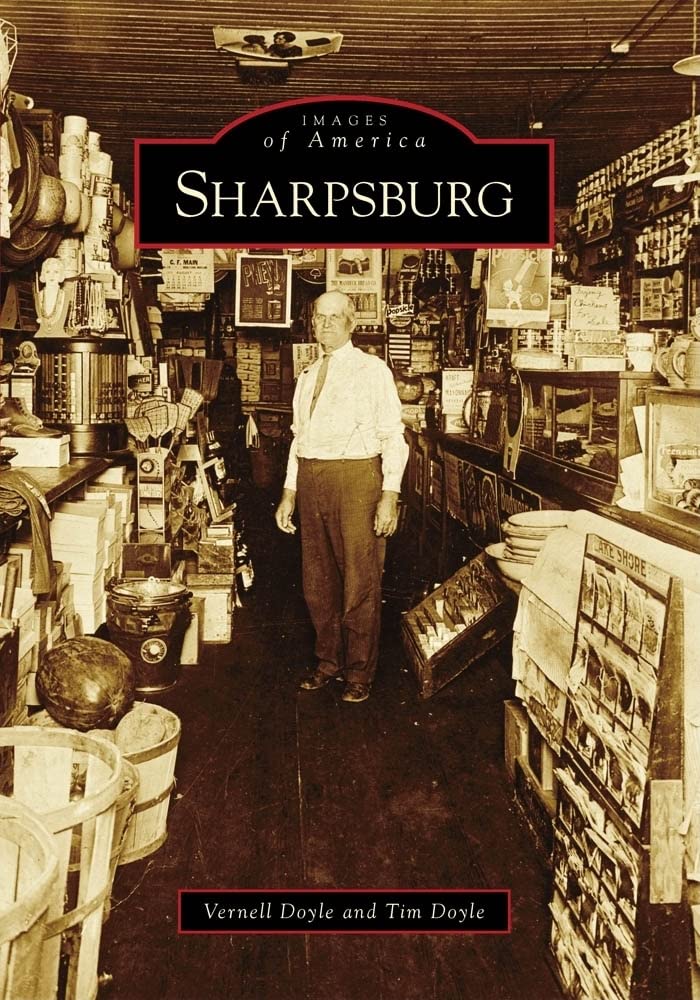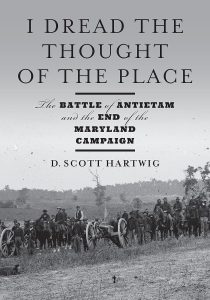Book Review Sharpsburg (Images of America)

 Below is my book review of Sharpsburg Images of America where authors Vernell and Tim Doyle strive to show the history of the town other than just the Battle of Antietam.
Below is my book review of Sharpsburg Images of America where authors Vernell and Tim Doyle strive to show the history of the town other than just the Battle of Antietam.
Doyle, Vernell and Tim Doyle. Sharpsburg (Images of America.) Charleston: Arcadia Publishing. 2009. ISBN 9780738568058, 127 pages, b/w photos, bibliography, $21.99.
The town of Sharpsburg, MD is a small community located in Washington County, near the border with Pennsylvania and is home to less than 1,000 residents. Sharpsburg was founded in 1763 and incorporated in 1832. The town is best known for the Civil War battle that occurred in September 1862, better known as the Battle of Antietam. There, more than 130,000 combined Union and Confederate men fought it out to what many consider a stalemate that was ultimately a Union victory as Robert E. Lee and Confederate troops retreated south across the Potomac. The casualty toll from the battle was horrific, more than 22,000 dead, wounded, missing, or taken prisoner. More than 3,600 men would be killed. Today, many of the Union dead from this battle are interred at Antietam National Cemetery. Abraham Lincoln used the seeming Union victory as his opportunity to announce the Emancipation Proclamation.
In their Images of America series book, authors Vernell and Tim Doyle, a retired teacher and retired journalist respectively, try to remind us that the community of Sharpsburg is much more than the Battle of Antietam. If you are unfamiliar with the series, authors pull together around 150 images around their subject, providing concise captions to help further their story. In five chapters, the Doyles lay out a history of Sharpsburg where the battle plays only a partial role. Only one chapter is tied directly to the September 1862 fight. In fact, they make their point right from the start. The cover photo of the book features the J. Hammond General Merchandise store and was taken in August 1932.
In their five chapters, the Doyle’s outline the history of a small Maryland community, from its earliest days of small farms and the Chesapeake & Ohio Canal through more modern days using a mix of photographs from their own collection, locals, the National Park Service, and other sources. This diversity of sources becomes one of the strengths of the book rather than relying on images from the Library of Congress that have been recycled over and over. Sure, there are quite a few images from the National Park Service and the Washington County Historical Society, but I bet the vast majority of these photos will be new to readers.
Chapters include the Town, the People, the Battlefield, the Canal, and the Area. In less than 130 pages, the battlefield is only given fifteen direct pages. I don’t find that to be a problem and neither should other readers, even those interested primarily in the Civil War. Even with the destructive impact that the Battle of Antietam had, it is important to realize the community was there before and still remains there today.
Interesting photos to me included that of Nancy Campbell (page 61) a freed slave, who at the time was described at a woman of “extraordinary good conduct and good character as proven to us by the testimony of William Rulett.” The chapter dealing with the C&O Canal showed just how important this was in diversifying job opportunities at the time. Other photos show just how similar our worlds are. Smiling groups of school children could be from most any community. Church groups and choirs could be interchangeable with towns in the south or the west. Local baseball teams might play on fields across the country if not for SHARPSBURG being emblazoned on their uniforms.
Each image is accompanied by a few lines of text, explaining to readers/viewers what they are seeing. The authors do not have a lot of space available for these captions and many are quite short thought others do go into more detail. These are easy to read and make each chapter easily digestible at a sitting.
And yet, while the Doyle’s do an admirable job of trying to keep the focus off the battle, one can’t help but return to September 1862. Period prints, with images of the Dunker Church, and armed men in rows ready for battle mix with later views of the Bloody Lane and Burnside Bridge. While president Franklin Roosevelt pays his respects during the 1937, 75th anniversary commemoration, a Lions Club meets on the battlefield for a group photo with a piece of artillery in 1962.
Can Sharpsburg ever shed its Civil War association? No, and the question really should be, would it want to.
 For those looking for insights into the Battle or a heavily Battle focused book this is not for you. If battle images are what you seek, I strongly recommend Antietam: The Photographic Legacy of America’s Bloodiest Day. For those interested in the community, and perhaps what the real Sharpsburg has been in addition to a bloody battlefield, this book is recommended.
For those looking for insights into the Battle or a heavily Battle focused book this is not for you. If battle images are what you seek, I strongly recommend Antietam: The Photographic Legacy of America’s Bloodiest Day. For those interested in the community, and perhaps what the real Sharpsburg has been in addition to a bloody battlefield, this book is recommended.
If you would like to read more of my book reviews, please use this link.
This post may contain affiliate links. If you click these links and make a purchase, I may receive a small commission. This commission does not affect any price that you pay. Affiliate programs or sponsors providing products do not impact the views and opinions shared in this blog.


